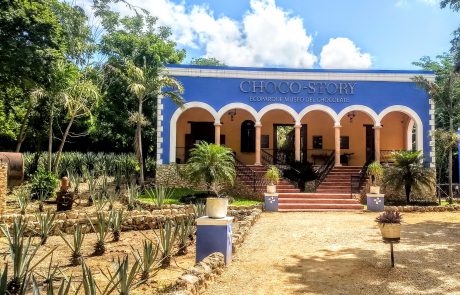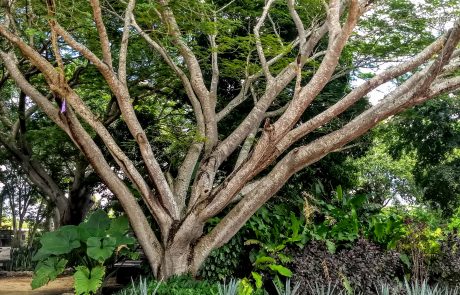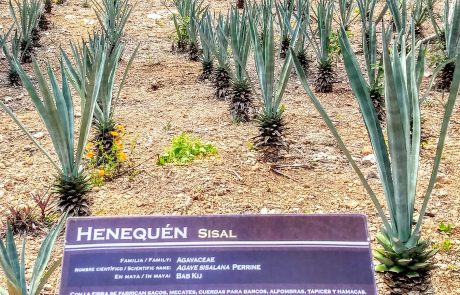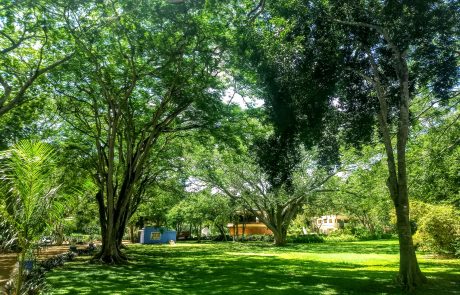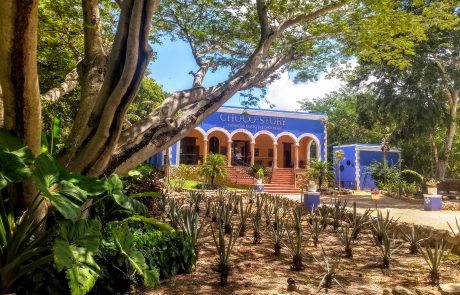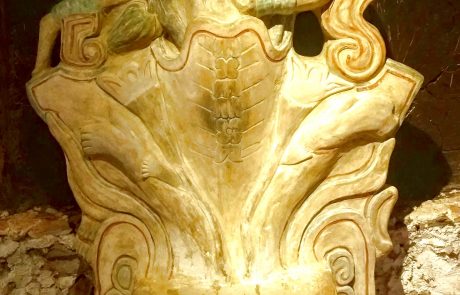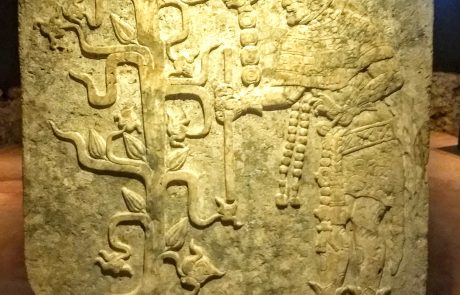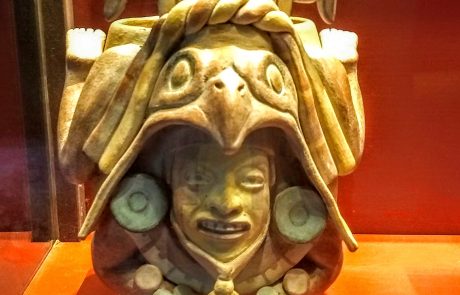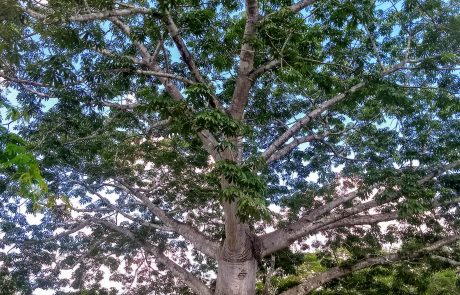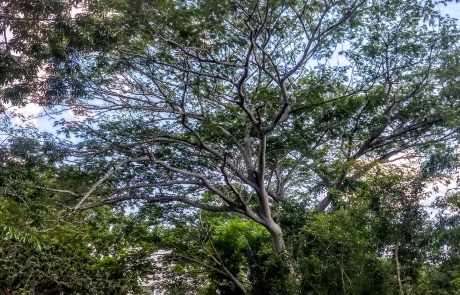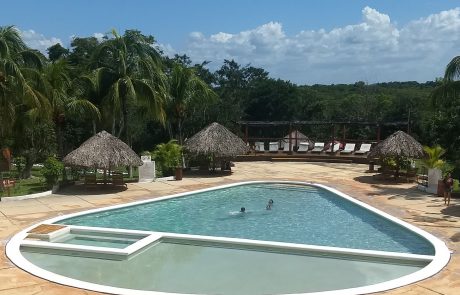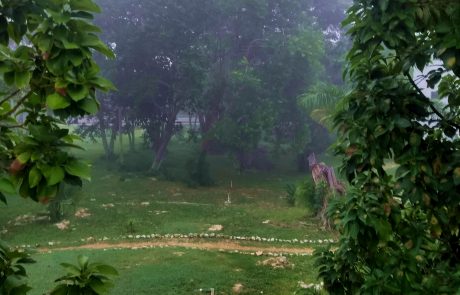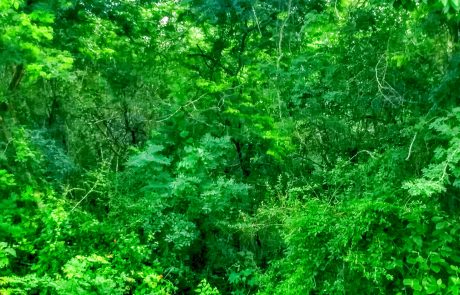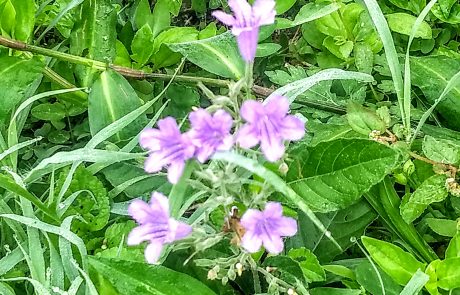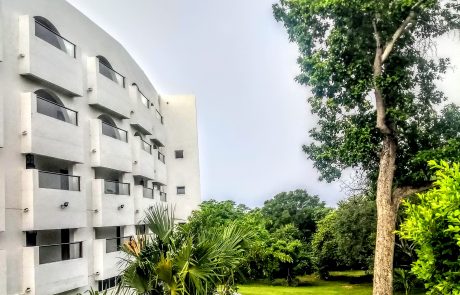October 2019
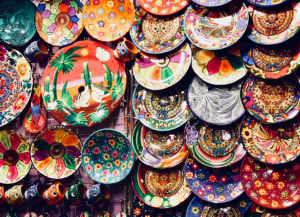 Uxmal, together with Chichen Itza, is one of the major Mayan archeological sites on the Yucatan Peninsula. It also has in its vicinity two other major attractions, the Museo del Chocolate (Chocolate Museum) and the three principal Mayan sites of the Ruta Puuc: Kabah, Sayil and Labnah. I was so entranced by the Puuc region that I visited one full day and then went back for two more days. As a result I’m dividing the post on Uxmal and its vicinity into two parts so I can give things their full due. This first part will deal with the Museo del Chocolate (the Chocolate Museum) and the landscape of the region itself, including one of the major resorts in Uxmal whose praises I can’t sing enough. In Part 2 I’ll examine the Uxmal archeological site, which is without doubt the most extensive and impressive site I visited during my two-week journey around Yucatan. I didn’t go to Chichen Itza. It may have topped Uxmal, but I was sufficiently gobsmacked by Uxmal not to need any ramp up in the arena of mindboggling. The Ruta Puuc sites deserve their own post, so I’ll do a separate write-up about them even though they’re only a short distance from Uxmal and usually form part of the archeological agenda for visitors to the area.
Uxmal, together with Chichen Itza, is one of the major Mayan archeological sites on the Yucatan Peninsula. It also has in its vicinity two other major attractions, the Museo del Chocolate (Chocolate Museum) and the three principal Mayan sites of the Ruta Puuc: Kabah, Sayil and Labnah. I was so entranced by the Puuc region that I visited one full day and then went back for two more days. As a result I’m dividing the post on Uxmal and its vicinity into two parts so I can give things their full due. This first part will deal with the Museo del Chocolate (the Chocolate Museum) and the landscape of the region itself, including one of the major resorts in Uxmal whose praises I can’t sing enough. In Part 2 I’ll examine the Uxmal archeological site, which is without doubt the most extensive and impressive site I visited during my two-week journey around Yucatan. I didn’t go to Chichen Itza. It may have topped Uxmal, but I was sufficiently gobsmacked by Uxmal not to need any ramp up in the arena of mindboggling. The Ruta Puuc sites deserve their own post, so I’ll do a separate write-up about them even though they’re only a short distance from Uxmal and usually form part of the archeological agenda for visitors to the area.
The Chocolate Museum (Choco-Story)
I’ll admit it — I was completely ignorant about the Chocolate Museum until I arrived in Uxmal and saw the sign for the Museum. It’s right off the main road as you come into town, just across the road from the turning for the archeological site. Since I had plenty of time before the hour appointed for checking into the hotel I decided to take it in and boy, am I glad I did.
So that you are in a much better informed state than I was, let me point you to the organizational website here. It’s an excellent website that gives you a very good overview of the museum and its offerings.
The name “Choco-Story” blazoned across the front of the main entrance is an Anglicized affair I find a bit puzzling, since nobody that I came across spoke English and the bulk of the descriptive material is in Spanish. It’s also commonly referred to as “el Museo del Chocolate” which obviously lies easier on Spanish-speaking tongues. Be that as it may, the official name is “Choco-Story” and gives a decent idea about what the place is about. I have no idea who developed the idea or the facility, but clearly a lot of money has gone into it and the job of putting the museum together is first rate. I can’t imagine going to Uxmal for the archeological site and not going to the Chocolate Museum. It’s really as good an experience as the visit to the Mayan ruins.
To begin with, some pics of the outside:
There’s plenty of sisal growing around the main building — for what reason I can’t explain, but if you’ve been to Sotuta de Peon before arriving at Uxmal as I had done, it all makes sense because of the importance of the sisal industry to the Yucatan Peninsula. Cacao production was not a Big Deal in the Puuc region of the Yucatan where Uxmal is located. Cacao was definitely a Big Deal in Mayan culture, no doubt about that, but the cultivation hotspots were elsewhere in the Mayan world, for example in Belize, Guatemala and the coastal areas of what is now Chiapas State. The website Cacaosophy (here) has this useful information by Gabriela Isabeau Piril:
The Maya were the first culture in what is now known as Mesoamerica to domesticate cacao. Mayan people were predominantly found in the regions we now call Guatemala, Belize, Honduras, and Southern Mexico. Areas along the western border of Guatemala, Tikal, and northern Belize were the regions, believed, which the Maya grew most of their cacao. Their elite crop, grown extensively since 300-600BCE (Grube 32-33) was cacao. For growing cacao they were in a prime location geographically due to the extensive systems of swaps and lowlands on the Yucatán peninsula. The Maya believed in sacrifice of an ample variety to the Gods. They would offer large portions of their food to the Gods, and various blood and animal sacrifices were common. According to their beliefs, extremely painful trials of self-inflicted wounds and piercings appeased the Gods.
Think of cacao as Mayan Beluga caviar and you’ll get an idea of its relative cultural importance. It was a luxury good, so valuable that cacao beans had exchange value like money. Just as you don’t expect to find Beluga cavair at WalMart, you didn’t find the average Mayan Joe having hot chocolate for breakfast before heading out to the milpa to tend the corn and beans. It was reserved for the elite in Mayan society.
As you can see from the pics the grounds are lovely. If it hadn’t been as hot as Billy Blue Blazes I’d have spent considerably more time outside enjoying the trees and the plants. Staying perfectly still in the shade made things tolerable, but only for about 15 minutes before it was time to head for the AC. If you go in the cooler season (December through March) then I expect you could spend a lovely time having a cuppa cocoa under the shade of the trees.
The main building is a lovely hacienda-like affair as you see in the two pics of it above. The gift shop is to the left of the entrance and has a goodly selection of cocoa-related things on offer. I was struck by the water feature at the entrance with a fine reproduction of a Mayan sculpture:
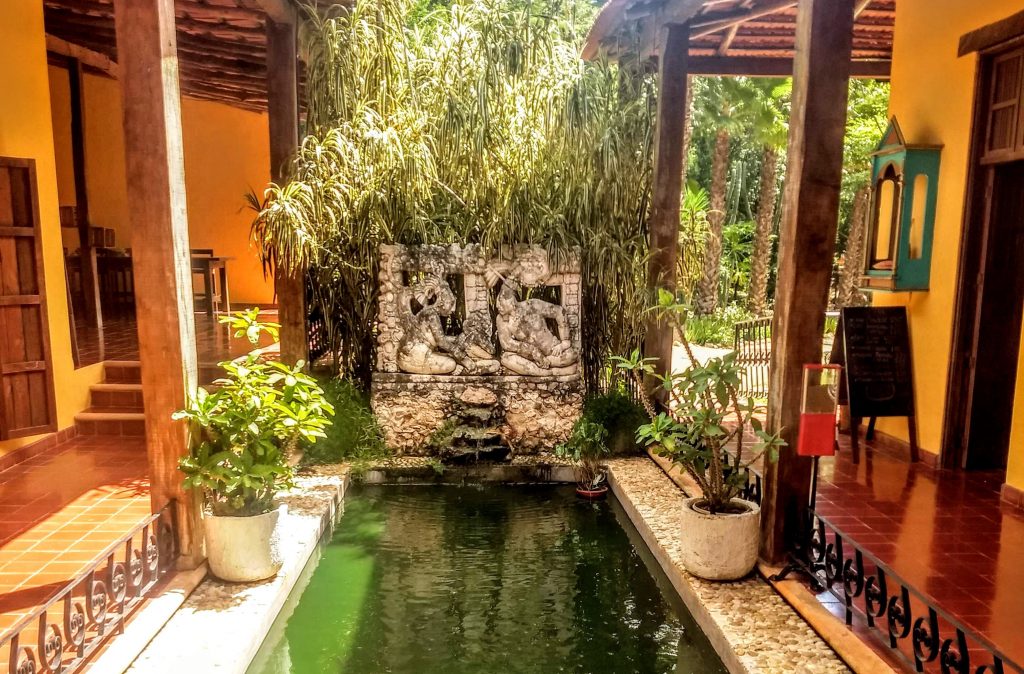
The window where you pay your entrance fee is off to the right from the sculpture and once you’ve paid up you are free to wander through the museum, which is open-air with several exhibition huts built like traditional Mayan houses. Here’s a layout of the place that you come across at the entrance to the exhibition loop:

There are six exhibition houses each with its own exhibit theme. Copying from the organizational website and doing a bit of translation yields the following list:
SALA 1 Los mayas y el cacao (Room 1 — The Mayans and Cacao)
SALA 2 El cacao (Room 2 — The Cocoa Plant and Bean)
SALA 3 La tradicional casa maya (Room 3 — The Traditional Mayan House)
SALA 4 Demostración bebida de chocolate (Room 4 — Demonstration of the Mayan Chocolate Drink)
SALA 5 La llegada de la bebida de chocolate a Europa (Room 5 — The Arrival of Chocolate in Europe)
SALA 6 Historia del chocolate de 1800 d. C a la actualidad (Room 6 — History of Chocolate from 1800 to the Present)
But there’s more. A group of locals do re-enactments of a Mayan ceremony to the rain god Chaac. I had no idea such a thing occurred every 20 minutes and as I walked from the first exhibition room toward the second I saw a man in costume (feather headdress, painted face, etc. etc.) and it dawned on me that there must be some kind of show to watch. As I approached him he told me (in Spanish) that there would be a ceremony in 10 minutes. What kind of ceremony, I wondered, but asked no questions. When I consulted the organizational website after the experience I found the following text (translated from Spanish by Yours Truly):
One of our most special moments is a ceremony in honor of the god Chaac.
The Mayan world is among the most developed cultures with regard to spirituality and situating the human being in the Cosmos.
Guided by a sack’be (white road) we connect with Mother Earth as we pass through the jungle and end at the altar, where a Mayan priest will lead a Mayan ceremony that has been done since time immemorial to ask the god Chaac, the giver of rain, to grant his blessing so that the milpa [field of corn, beans and squash] can grow and develop.
I went to the ceremony at sound of the conch shell but was entirely at a loss about what the ceremony meant. There’s no explanation given before the proceedings begin. Only after looking up the website did I discover I had attended an invocation to the god Chaac. The entire ceremony is conducted in Yucatec Mayan, obviously, not Spanish, so it was all Greek to me. I’m the wrong sort of person to attend such things. Too many questions arise in my mind and without answers to them I feel like I’m being sold a bill of goods. How do they know what a Mayan ceremony was really like? From what Mayan Book of Common Prayer did they lift this ceremony to Chaac? Why do the celebrants look bored to death and seem to be thinking mostly about how good a cold beer would taste? Were the ancient Mayan attendees confronted on exit with a receptacle marked in large letters PROPINAS (tips)? I always feel in such instances that I’m being bamboozled, not initiated into mysteries. After checking up on Chaac on the Internet I could probably have written my own ceremony. But I went, I watched, and I kept my mouth shut. So I did my part. And yes, I left a tip to pay for the beers. 🙂
The exhibits are extremely well done and include some wonderful reproductions of Mayan sculptures. To the pics:
The first pic is the Mayan god of corn. We weren’t properly introduced so I didn’t catch the name. The stelae reproduction gives a good idea of what such things must have looked like when they were fresh out of the workshop — something you’re hard pressed to find at the archeological sites, where the limestone has eroded to the point that the carving is often barely discernible. The small piece is interesting but I have no idea what it represents. I’d be delighted to provide detailed information for no other reason than that the face is the only non-grumpy face I’ve ever seen in Mayan art. All the others are serious as all get out or decidedly sourpuss. What a delight to see a smile on this one.
In addition to the exhibition rooms there’s a viewing area with spider monkeys, a place to see the local variety of crocodile (fortunately they were napping somewhere during my visit so I was spared the spectacle, not being too keen on things reptilian to begin with), and an aviary with a few birdies sitting about. The one I saw was a parrot that looked at me like somebody in a bar who’s ready to pick a fight. I just waved and kept on moving.
There’s also a chance to hear a presentation about the Mayan way of preparing chocolate as a drink — with chile, not sugar — and getting a taste of the real stuff. You can add sugar and cinnamon to your own little cup if you’re not up for trying the authentic stuff with hot chilis. The staff are forthcoming with questions and the experience was enjoyable.
So all in all I’d give the Museum an 8 out of 10 and recommend it to anyone who happens to be in the vicinity. The entrance fee for foreigners isn’t a particularly cheap date, but it’s easy to feel that you’ve had value for money once you go through the Museum and take in all it has to offer. So if you’re in Uxmal to see the archeological site, don’t miss out on the opportunity to see the Chocolate Museum.
Uxmal Resort Maya
This hotel was my home-away-from home during my two stays in Uxmal and I loved it to death. Since my trip took place outside high season there were very few guests. During my second visit, in fact, I didn’t see any other guests and believe I had the place entirely to myself, which is saying something because it’s a BIG hotel. It was my wont to go out early in the morning and walk the grounds when the birds were singing — very different bird sounds from the ones I’m used to in the Bitter North, that’s for sure.
The hotel is about 1 km north of the archeological site right off the main highway. It has beautiful grounds and all the comforts you’d expect of a resort-style hotel. The hotel website is here. Here are the pics I have (there are many more on the hotel website):
First of all, a word about the trees. The grounds have many fine, large trees for your viewing pleasure. The parking area is lined with flame trees (Delonix regia) that would knock your socks off if you visited during their bloom time. They were taking a rest while I was there so I have no pics of them ablaze with red flowers. It would be a sight worth seeing when it’s going on.
The tree in the first pic is a kapok, called “ceiba” in Spanish (Ceiba pentandra). The kapok can grow to enormous size and its canopy is enormous. The one in the pic is at the entrance to the hotel’s parking lot. The trunk arrested my attention when I drove past it and after getting settled in my room I went out for a howdy-do. I’d never seen a tree like it before and had no idea what it was. The trunk reminded me of the shape and texture of a baobab (Adansonia digitata) but I knew it wasn’t a baobab. When I found out the name and did some research I discovered there was good reason the baobab had come to mind — the kapok used to be classified in the baobab family, Bombacaceae. Phylogenetics has subsequently established it in the mallow family, Malvaceae — an astonishing turn of events, to my mind, but genetics is genetics and I’ll take the botanists’ word for it (webpage here):
Recent phylogenetic research has shown that Bombacaceae as traditionally circumscribed (including tribe Durioneae) is not a monophyletic group. Bombacaceae is no longer recognized by the Angiosperm Phylogeny Group I 1998, II 2003 and Kubitzki system 2003 at the rank of family, the bulk of the taxa in question being treated as subfamilies Bombacoideae and Helicteroideae within family Malvaceae sensu lato. A close relationship between Bombacaceae and Malvaceae has long been recognized but until recently the families have been kept separate in most classification systems, and continue to be separated in many references, including the reference work in classification of flowering plants: Heywood et al. 2007 [1] and Takhtajan 2009,[2] but have been lumped together in Angiosperm Phylogeny Website.
Well, no matter what confusion exists in our minds about the kapok, it is squarely itself and a lovely presence wherever it happens to grow. I had never seen branching of the sort the kapok finds amusing — some of the branches are thick enough to be trunks in their own right, as this pic shows: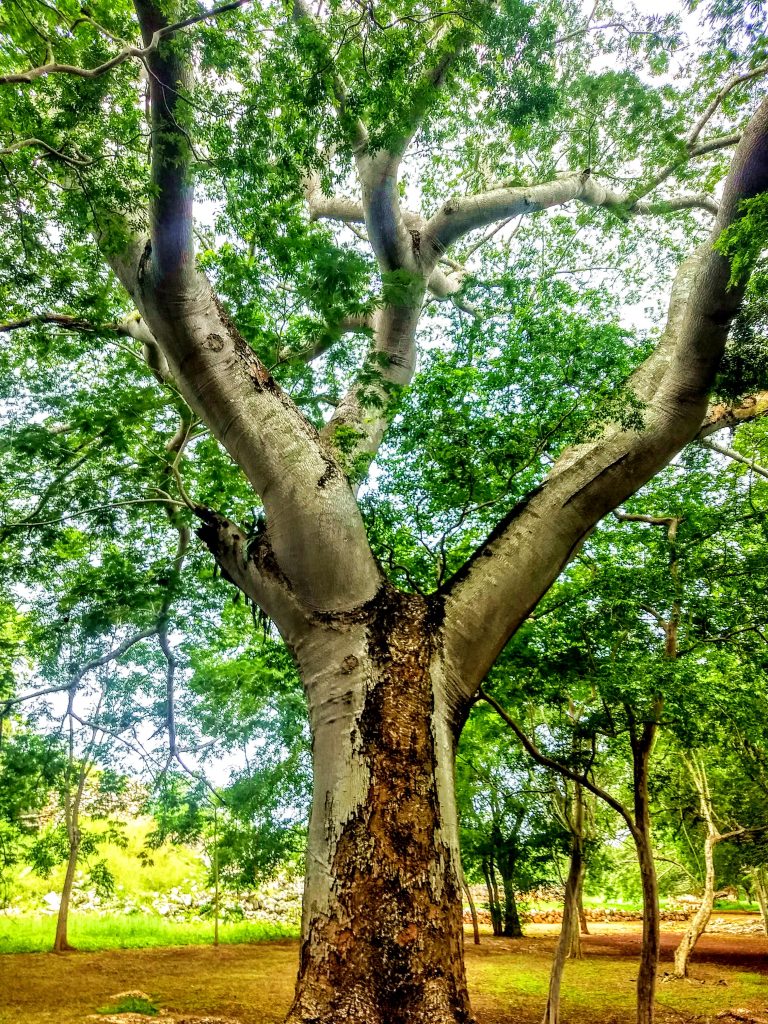
Kapoks can grow to over 200 feet in height and the resulting canopy is HUGE. No wonder the kapok was sacred to the Mayas, for whom it represented the World Tree, just as Yggdrasil in Norse mythology connected the nine worlds. In Mayan mythology the kapok served exactly the same function, as this text from MexiGo Tours explains (webpage here):
Desde el período preclásico, los Mayas concibieron al Cosmos como una estructura dividida en tres niveles sobrepuestos: El Mundo Superior compuesto de 13 cielos. El Nivel Medio, representado por Witz, la Montaña Sagrada, o el nivel mundano en donde vivimos, que es la fuente de sustento de la vida y en donde el maíz sagrado fue cultivado como alimento. Y, el Nivel Inferior, generalmente relacionado con el mundo acuático, con sus 9 niveles del Inframundo. Este es a dónde van los muertos cuando se terminan sus vidas.
La Ceiba era un árbol sagrado para los Mayas. La altura de este árbol hizo creer a los Mayas que sus ramas soportaban a los cielos, mientras que sus profundas raíces eran los medios de comunicación entre el mundo de los vivos y el Inframundo.
[From the Preclassic Period the Mayans conceived of the Cosmos as a series of three superimposed levels: The Upper World composed of 13 heavens, the Middle World composed of the Sacred Mountain, i.e. the level in which we live, where life is sustained by the cultivation of the sacred corn plant, and finally, the Underworld, usually associated with an aquatic environment, which has 9 levels, which is where people go when they die.
The kapok tree was sacred to the Mayans. The height of the tree led them to believe that its branches supported the heavens, while its deep roots enable communication between the regions of the living and the Underworld.]
As a tourist you’re under the same constraints that apply to family gatherings when the house is divided: no talk about either politics or religion. So I limited my conversations with the kapoks I met to compliments about their personal appearance. We got on quite well and I made several new friends. The kapok at the hotel became a buddy, in fact, and I think of it fondly when I remember my time there.
Pic number 5 is a poor image of something I found magical: fog in the mornings. Fog was the last thing I expected in the tropics, but in the rainy season the humidity builds in the atmosphere during the cooler temperatures of the night to form fog as thick as any you could hope to find in London. It usually burns off by 9 AM, but when I was out and about in the early morning it was like being lost in Fairy Land. The dew on the grass sits in huge droplets that will soak your shoes in a heartbeat (and yes, that’s the voice of experience talking). There are plenty of handsome wildflowers around the periphery of the hotel, one example of which you see in Pic Number 7. The last pic is the view from the balcony of my room. Can’t ask for a better panorama than that.
There are resort facilities like the Mayan mud bath available (check out the hotel website for details), but I was perfectly content just wandering around and taking in the sights. The restaurant on the ground level is quite good, so you have everything you need right there. Other restaurants offering Yucatecan cuisine are nearby, as well, so you have lots of options for filling your tummy.
If you plan a trip to Uxmal the Uxmal Resort Maya makes the perfect home-away-from-home during your stay. The staff are wonderful and the people at Reception speak good English if your Spanish isn’t up to the job. I thoroughly enjoyed both my stays there and would recommend it to anyone planning a stay in the area.
Most people go to Uxmal for the archeological site and I was no exception. In Part 2 of this post I’ll go into full detail about the site and what I found there. Stay tuned …

